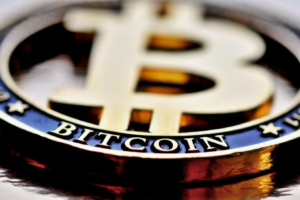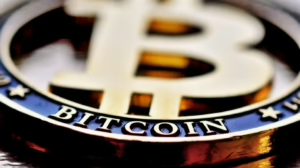Technology Through Time: How Innovations Have Altered the Course of History
Introduction
The fabric of human history is intricately woven with the thread of technological innovation. From simple tools that aided survival to complex digital systems that govern modern society, technology has played a pivotal role in shaping human experiences, cultures, and civilizations. This article explores the transformative power of technological innovations throughout history, shedding light on key milestones that have significantly altered the course of human development.
The Dawn of Technology: Prehistoric Innovations
The Stone Age: Tools and Fire
The origin of technology can be traced back to the Stone Age, when early humans first began using tools. The discovery of flint tools allowed our ancestors to hunt more effectively, prepare food, and create shelter [^1]. Innovations such as control of fire provided warmth, protection, and the ability to cook food, which had significant implications for nutrition and social organization.
Agricultural Revolution: The Birth of Farming
Around 10,000 BCE, the Agricultural Revolution marked a monumental shift in human history. The domestication of plants and animals enabled sedentary lifestyles, leading to the establishment of stable communities and eventually complex societies [^2]. This shift also paved the way for advances in technology, such as irrigation systems and the plow, which further increased agricultural productivity and led to population growth.
The Rise of Civilizations: Ancient Technologies
Writing Systems: The Preservation of Knowledge
The invention of writing in ancient civilizations like Mesopotamia and Egypt was a groundbreaking technology that enabled the recording of history, laws, and trade. Cuneiform and hieroglyphics allowed for the preservation of knowledge across generations, which was crucial for the administration of increasingly complex societies [^3]. This innovation laid the groundwork for future developments in literature, science, and governance.
Architectural Wonders: Engineering Feats
Advancements in engineering and architecture during ancient times reshaped urban landscapes. The construction of structures such as the Pyramids of Giza and the Roman aqueducts demonstrated remarkable ingenuity and provided insights into the mathematical and scientific principles of the era [^4]. These innovations not only served functional purposes but symbolized the might and sophistication of civilizations, influencing architectural design for centuries.
The Middle Ages: Technological Stagnation and Resurgence
The Dark Ages: A Period of Decline
Following the fall of the Western Roman Empire, Europe entered the Dark Ages, a period marked by economic and cultural decline. While the term “Dark Ages” suggests a complete technological stagnation, it is essential to recognize that significant advancements were still made in other parts of the world, such as the Islamic Golden Age. Scholars in the Islamic world preserved and expanded upon Greco-Roman knowledge, laying the foundation for future European innovations [^5].
The Printing Revolution: A New Era of Information
The invention of the printing press by Johannes Gutenberg in the 15th century revolutionized the way information was disseminated. Books became more accessible, facilitating the spread of ideas, literacy, and education. The Printing Revolution played a crucial role in the Reformation and the Renaissance, ultimately leading to the Scientific Revolution and the Enlightenment [^6].
The Industrial Age: Transforming Society
The Birth of Industrialization
The Industrial Revolution, beginning in the late 18th century, marked a seismic shift in technological innovation. The transition from agrarian economies to industrial powerhouses brought about unprecedented changes in manufacturing, transportation, and communication [^7]. The steam engine, textile machinery, and iron production techniques fundamentally transformed industries and economies, leading to urbanization and altering social structures.
Transportation Innovations: Connecting the World
Technological advancements in transportation, such as the steam locomotive and the steamship, drastically reduced travel time and facilitated global trade. The expansion of railroads opened up new regions for economic exploitation and migration, effectively shrinking the world [^8]. This interconnectedness laid the groundwork for a global economy, cementing the role of technology in shaping international relations.
The 20th Century: Information and Communication Revolution
The Rise of Electronics
The 20th century saw the emergence of electronics as a pivotal force in technological advancement. The invention of the radio and television created new avenues for communication and entertainment, profoundly impacting culture and society. These innovations facilitated the rapid dissemination of information, influencing public opinion and political movements [^9].
The Internet: A Paradigm Shift
The advent of the internet in the late 20th century represented a paradigm shift in human connectivity. Initially developed for military purposes, the internet evolved into a global network that transformed how people communicate, share information, and conduct business. E-commerce, social media, and online education emerged from this revolution, creating a digital landscape that reshaped modern society [^10].
The 21st Century: Emerging Technologies and Ethical Dilemmas
Artificial Intelligence: The New Frontier
As we moved into the 21st century, artificial intelligence (AI) emerged as one of the most transformative technologies. From machine learning algorithms to autonomous systems, AI has the potential to revolutionize industries, including healthcare, finance, and manufacturing [^11]. However, the rise of AI also raises ethical questions about job displacement, privacy, and the future of human decision-making.
Biotechnology: The Future of Medicine
Biotechnology has made significant strides in recent years, with innovations such as CRISPR gene editing and personalized medicine offering new hope for treating genetic disorders and diseases. These technologies not only hold the potential to enhance human health but also raise ethical considerations regarding genetic manipulation and bioengineering [^12].
Conclusion
The course of human history has been inextricably linked to technological innovation. From the earliest tools of our ancestors to the sophisticated digital systems of today, technology has continually reshaped our societies, economies, and cultures. As we stand on the brink of further advancements, it is essential to reflect on the lessons of the past and consider the ethical implications of emerging technologies. The journey of innovation is far from over; as we navigate the complexities of the modern world, the quest for knowledge and improvement remains a fundamental driving force in the evolution of humanity.
[^1]: Leroi-Gourhan, André. “Prehistoric Man and His World.” Harvard University Press, 1993.[^2]: Pollan, Michael. “The Omnivore’s Dilemma: A Natural History of Four Meals.” Penguin Press, 2006.
[^3]: Havel, Vaclav. “The Power of the Powerless.” Arktos, 2014.
[^4]: Gage, John. “The Pyramids: The Mystery, Culture, and Legacy of Ancient Egypt.” HarperCollins, 2007.
[^5]: Latham, P. “Islamic Science: The Scientific Contributions of the Muslim World.” University of Cambridge, 2016.
[^6]: Eisenstein, Elizabeth L. “The Printing Revolution in Early Modern Europe.” Cambridge University Press, 1983.
[^7]: Ashtor, Eliyahu. “A Social and Economic History of the Near East in the Middle Ages.” Princeton University Press, 1976.
[^8]: Merriman, John. “A History of Modern Europe: From the Renaissance to the Present.” W.W. Norton & Company, 2010.
[^9]: McLuhan, Marshall. “Understanding Media: The Extensions of Man.” MIT Press, 1994.
[^10]: Castells, Manuel. “The Rise of the Network Society.” Wiley-Blackwell, 2010.
[^11]: Russell, Stuart, and Peter Norvig. “Artificial Intelligence: A Modern Approach.” Prentice Hall, 2009.
[^12]: Doudna, Jennifer A. “A Crack in Creation: Gene Editing and the Unthinkable Power to Control Evolution.” Houghton Mifflin Harcourt, 2017.
This framework covers a broad sweep of technological advancements across different eras and offers insights into how they have shaped human history. If you would like more details on any section or additional sources, feel free to ask!


























Add Comment